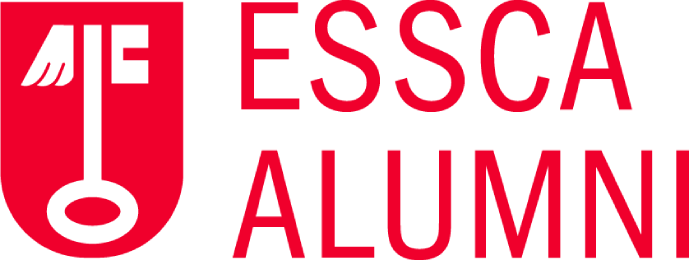Teachers, Courses, & Staff
A close look at the changes in the distribution and content of the courses offered by the school over the course of this century provides a formidable sociological document, and is particularly instructive.
From 1909 to 1954, the relatively dense curriculum was spread over two years. In his 1910 opuscule "La Nécessité de l'enseignement commercial" (The Necessity of Commercial Education), Paul BAUGAS describes the curriculum in detail: "The first year is devoted to teaching the following subjects: Commerce, accounting and commercial documents, commercial legislation, commercial institutions, political economy, commercial geography, commercial arithmetic and financial algebra, English, German and Spanish, shorthand and typing.
In addition to accounting, commercial law and languages, the second-year curriculum includes French civil law, customs legislation, tax law, commercial procedure, social economics and labor and industrial legislation. A course on ethics as they relate to business rounds out the curriculum.

Professors at the UCO and ESSCA law faculties in the 1930s (right, foreground, Paul BAUGAS).
In the light of this overview, it's fair to say that breadth and variety never get in the way of precision.
A small vade-mecum of some sixty pages, dated 1911, informs us of the content of the programs and, in particular, provides us with a detailed outline of the twenty or so courses taught by the 16 or so teachers attached to the establishment. What's striking in hindsight is the school's commitment to comprehensiveness, and its clear desire to link the workings of complex technical mechanisms to a more global understanding of things.
Twenty years later, an "ESCA" information brochure printed in May 1932 listed the disciplines deemed to be priorities for the School's curriculum: Accounting, Commercial Law, Monetary Questions, Commercial Geography, Political Economy, Arithmetic applied to Commerce, Study of the Customs System, Industrial Legislation, etc.". Industrial Legislation, Labor Laws, Tax Legislation, form a whole whose knowledge is indispensable in a program of high-level commercial education".
Many of the 16 teaching staff, and in particular all the legal experts, come from the UCO. As the brochure states: " The Catholic University offers a natural breeding ground for experienced teachers, from which the École Supérieure de Commerce d'Angers had to recruit the best. Angers was to recruit the majority of its teaching staff, thus providing students and their families with every guarantee of knowledge and method".
As Henri MARTHOREL, a lawyer and professor of law at the UCO and at the school, points out, while technical subjects quite rightly account for the lion's share, they are not the only ones. In April 1951, he wrote in the school's newsletter:
" Since its foundation, ESSCA has always remembered that its role required it to train not only competent and conscientious (specialists), but also cultivated men in the true sense of the word, i.e. men who would not only be technicians of commerce and industry, but who would retain from their time at the School an open-mindedness that would enable them to take an interest in all questions related to the environment. industry, but who would retain from their time at the École an open-mindedness that would enable them to take an interest in all questions of general interest, however remote they may be.general interest, no matter how far removed they may appear from their professional concerns. This is why, right from the start, the School included courses in Commercial Law, Civil Law, Political Economy, etc., alongside purely technical courses in Accounting or Commercial Mathematics. This tendency to broaden the field of study has only become more pronounced in recent years, and more and more we are seeing theattention of our (students) drawn to problems of general culture (in parallel with their professional specializations). (...) Students, without forgetting that your first obligation is a perfect knowledge of the techniques of your profession, you must not forget either that to be industrial or commercial leaders you must, instead of having blinders on, have an open mind.instead of having blinkers on, you need to have your minds open to all the problems currently attracting the attention of the educated man".
This line of thinking could be taken up to the letter by the current management, who are multiplying opportunities for openness by introducing "Ateliers d'Ouverture Culturelle", "Seminars" on major themes and conferences of general interest into the curriculum. Ateliers d'Ouverture Culturelle", "Seminars" on major themes and conferences of general interest.
In 1955, following the entry of the first three-year class in October of the previous year, there were 27 teaching staff for 120 students. At that time, teaching expenses accounted for 40% of the School's total expenditure. In 1938, it was 66%, and in 1958, 76.5%!
Among the subjects studied were banking, transport, advertising, import/export, insurance and moral and social philosophy. Taught by specialists, these subjects had already been taught from the outset, albeit on an optional basis.
From 1969, the year ESSCA was established, the organization of studies underwent profound changes, with the introduction of a new four-year structure. The first year is an introductory year. Although students are required to take an initial course on Company Organization and a General Accounting course, they study the "environmental" disciplines that are essential for all decision-makers: History of Economic Thought, Economics, Law, Public Institutions, Languages, Financial Mathematics, Statistics. The second and third years take up this training, deepening it and tackling the sciences directly relevant to corporate life. The fourth year is a year of synthesis and orientation, preparing our future graduates directly for working life through a wide range of courses to choose from.
ESSCA proclaims: " The School has always wanted to bring together teaching professionals and business practitioners in its teaching staff, so as to encourage exchanges between the design and implementation of business management tools . "
So, notably, when the School moved to Belle-Beille, there were still no permanent teachers on the staff. Fortunately, the institution had a number of highly committed part-timers among its 31 or so teachers. Their number rose to 48 in 1973. The most atypical of these was Georges BYKADOROFF, a well-known figure in Angers, who was a physical education teacher and the school's sports advisor.
The situation changed in 1976, when a reform of the teaching organization became imperative. Six teaching departments, each headed by a permanent professor, were set up to effectively coordinate the work of section heads, assistants, part-time teachers and the more than 100 lecturers at the time. The "Finance and Accounting", "Legal and Economic Studies", "Calculation and Data Processing", "Marketing", "Strategy and Management", "Finance" and "Accounting" departments are all part of this program.Marketing", "Strategy and Human Sciences", "Languages and Communication" are complemented by the "Information Information-Documentation" department, headed by Jean-Pierre KAUFFMANN, head of the "SID", which has now become the "Médiathèque".Our students of the last thirty-five years know him well, having worked there since mid-October 1974, and full-time since 1977.
Originally designed for 200 students in 1969, the building housed 327 in 1976. As a result, the number of courses increased, and a strong trend began to emerge that would never be denied: courses for entire classes, which required lectures in lecture halls, were gradually abandoned in favor of group courses in smaller classrooms, the number of which inevitably multiplied.
In 1981, twelve permanent full- and part-time professors provided around a third of the total number of teaching hours at the École during the academic year, for 380 students. The school continues to rely on the assistance of sixty part-time and temporary lecturers.
With 530 students enrolled in 1987, ESSCA has one permanent teacher for every 36 students, for a total of fifteen teachers.
While the architecture of training and the current organization of courses are the subject of another chapter (Cf. "Teaching departments"), one of their characteristics is worth mentioning here: the close interweaving of the École's programs with those of industry. We have already emphasized the extent to which the company is a full partner throughout the École curriculum. But one of its essential roles has yet to be defined.
Françoise BORDET, Director of Master's Programs, has this to say on the subject: "The link with companies is fundamental for ESSCA . In particular, they have a strong presence through our speakers and active participation in program steering groups. For example, the Finance Department works with representatives of companies such as Société Générale, but also with Crédit Industriel de l'Ouest and Crédit Mutuel. They help us to build content and programs that meet the current and future needs of the sector. "
Adaptations and fine-tuning to market demands are not only the keys to the future, but also to the credibility of a business school in tune with its environment.
And our establishment is not lacking in recognition. That's why it attracts the best in terms of top-level professionals.
"Currently, ESSCA's faculty is made up of sixty-two permanent professors, including forty-five PhDs. Their research activity leads them to publish in international journals in the humanities, as well as in philosophy, sociology, economics, management and law, contributing to knowledge within the academic community" , as Benjamin MORISSE, Doctor in Management Sciences and Dean of the faculty, points out. " The cultural diversity and richness of the École's faculty is one of the key strengths of the pedagogical efficiency recognized by the prestigious accreditations our programs enjoy . "
In addition, there are currently 400 lecturers, senior lecturers and international experts in the field.
In 2009, the School employed a total of 165 people, 135 of whom were based in Angers, 20 in Paris and 10 in Budapest and Shanghai.
Finally, let's turn to Xavier DURAND, Doctor of Management Sciences and head of auditing courses. To allow him to conclude, we asked him this simple yet complex question: "Given the priorities currently defined and displayed by all the School's bodies, what is an ESSCA teacher in 2009? " :
"Well, it's not just the one who knows; at the heart of the pedagogical system, the ESSCA teacher is not only the one who transmits knowledge, but also the one who coordinates teams of contributors, supervises students, guides, advises, encourages and supports them. Attentive to changes in the world around him, he must be both a theorist and a man of the field, and an active participant in the scientific life of his discipline, must always keep in touch with practitioners. "
In short, there's no doubt that today's teacher has become a one-man band... in a choral film!



